|
Welcome to A&A. There are 12 full reviews in this issue. Click on an artist to jump to the review, or simply scroll through the list. If you want information on any particular release, check out the Label info page. All reviews are written by Jon Worley unless otherwise noted. If you have any problems, criticisms or suggestions, drop me a line.
|
|
|
A&A #314 reviews February 2010
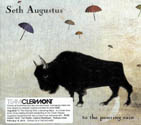 Seth Augustus Seth AugustusTo the Pouring Rain (Porto Franco) Combining the voice of Tom Waits and the minimalist approach of Wil Oldham, Seth Augustus is certainly an ambitious fellow. But the understated approach undercuts any latent pretentious tendencies, and so the songs rattle forth with confidence and style. The sound is raspy and dark, with almost an old-fashioned demo feel. That's just how he wants things, though. Augustus drops the minimalist scrim from time to time, most effectively on "Big Cocoon," a song that goes straight into the heart of Waits territory without losing Augustus's identity. Indeed, Augustus's ability to remain his own person despite the almost oppressive presence of his influences is impressive. I would still like to hear him slide a step one way or the other, but I'm not going to complain too loudly. Contact:
 Fanshaw FanshawDark Eyes (Mint) Olivia Featherstonhaugh is the driving force behind Fanshaw (is that the proper pronunciation of her last name? Just curious...), and she dives right into the eclectic pop pool that seems to have flooded western Canada. Featherstonhaugh is comfortable arranging one song as a multi-tracked vocals-only piece, another as a wide-ranging pop exploration and yet another as a sweetened version of late 80s indie country. And that's all without getting to the Kate Bush fetish she affects from time to time. It's all good. I mean that literally. Featherstonhaugh seems incapable of sticking to any particular style (though most of these pieces are understated in one way or another), but whatever she touches emerges somewhere near the realm of perfection. The glue to this album is her voice, which she often uses to an ethereal effect. There's a real strength underlying those breathy tones, though, and that steel girds that album and brings everything together. There are waves to be made with this one.
Contact:
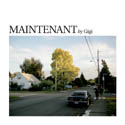 Gigi GigiMaintenant (Tomlab) Colin Stewart and Nick Krgovich decided that what the world needs now is an expansive set of Spectoresque pop. I hadn't been aware of such a deficiency, but after listening to Maintenant, I'm willing to reassess my previous position. At the very least, the world needs this particular expansive set of Spectoresque pop. The boys recruit a number "guest" vocalists (though when you don't have a regular singer, it seems wrong to call anyone a "guest") to decorate their compositions, and then they throw in just enough of the wall of sound to induce a slight twinge when thinking about the passing of mono. Of course, this is a stereo recording. I wonder if Stewart and Krgovich even considered going whole hog and heading back to mono. I doubt it. Why ruin something good with an abstract artistic conceit? Yeah, it's much better to actually make good music that sounds good, too. And if you haven't spent years mixing into mono, you will screw it up. Gigi makes nary a misstep here, but rather dances nimbly over the non-British pop sounds of the 60s. Delish.
 Julie the Band
Julie the BandAn Act of Communication (Baby Bird) Okay, this is one seriously ambitious band. Julie the Band pumps out layered anthem after layered anthem, hoping that the hooks are able to overcome the weight of the songs. By the way: These hooks could raise the Titanic. Which, honestly, is almost necessary at times. I'm at a loss to try and figure out why these boys are trying to put so much into what ought to be relatively simple rock songs. Maybe because these guys are in L.A. and think that a "deal" is actually worth any money these days. Or maybe because they're tired of listening to paper-thin songs and think they can do better. I'd say they know they can. This album is most assured, from the writing to the playing to the ultra-sharp, almost blinding production. I'm guessing these poor saps think that you can make some serious buckage with some seriously good music. Lightning does strike on rare occasions, but if it doesn't, you might as well make a good album. Julie the Band has the goods. I refuse to make commercial predictions, but I can say that I'll be listening to this one for years to come.
Contact:
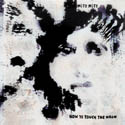 Nite Nite
Nite NiteHow to Touch the Moon (self-released) Nite Nite riffles through the synth-goth-punk-disco styles of the early eighties with astounding ease. It's one thing to be a revivalist; it's quite another to actually do something different (and interesting) with established sounds. Hewing to a ragged Blondie/Cure axis (singer Davis Chatfield has a pleasantly expressive alto that does cross into Debbie Harry territory at times), Nite Nite creates bounding pop gems set deep in a synth universe. The band doesn't have a full-time drummer, and that leads a reliance on guitar and bass for a larger load of the rhythm work than normal. That keeps these songs in motion. And there are drums, of course. After all, this stuff is pop music. But the emphasis is on the instruments in the rhythmic periphery. That keeps things nicely off-kilter. Bouncy and fun, with enough bite to please. Nite Nite may be something of a revivalist, but I like the way it spins its influences. This spell has been cast quite well.
Contact:
 Mike
Olson Mike
OlsonIncidental (Henceforth) A set of six movements, Incidental contains some of the most impressive composing I've heard in quite a while. This is avant garde, of course. You won't be hearing it on the local classical music radio station, even though it arises from the finest traditions. The work was recorded piece by piece. Some of the parts (the strings, in particular) were notated. Many of them were not. In any case, Olson recorded and put this together with intent. I'm gonna stick with composition as my noun of choice. In his notes, Olson says this music is about movement. Indeed, that's the most obvious thing about it. But I think some of the more introspective moments lend another perspective on objects in motion. That is, at some point everything must rest. The orchestra (as such) contains both the traditional brass, reeds and strings as well as electric guitars and rock drums. The most impressive thing is that he was able to conceive this music and then put it together so convincingly. I think Frank Zappa might be fairly impressed by what Olson has wrought.
Contact:
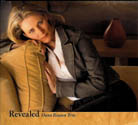 Dana
Reason Trio Dana
Reason TrioRevealed (Circumvention) A trio of piano (Reason), bass (Dominic Duval) and percussion (John Heward). Reason attacks the piano with the manic power of a tornado and, somewhat counterintuitively, the subtlety of a breeze. So what we have here are energetic pieces that fly all over the place and yet still manage to convey deep feeling. Reason's strengths are in the deftness (and softness) of her technical virtuosity. She's not an exceptionally lyrical player, though she carries off the more gentles passages quite well. Energy is what this is all about. Reason and her mates have a collective spirit that really fires these pieces. When that sort of collaborative magic appears, everything seems to flow that much better. These are souls in similar orbits, and they complement each other very well. Most impressive. The absolute absence of formality on this album ought to endear it to many who don't think they like jazz. The exceptional compositions and playing will impress just about anyone who does like jazz. This is one of those rare albums that ought to work for just about anyone.
Contact:
 Frank
Rosaly Frank
RosalyMilkwork (Contraphonic) Frank Rosaly is a drummer. This album is pretty much him drumming. Except for one thing. He messes around with the recordings. So for much of the time, you just get some impressive jazz improv drumming. And then you notice something else going on. Electronic blips that serve as counterrhythms. Then the sounds of the drums themselves seem to shift. That's because they are. Rosaly is using all the tools at his disposal to make music. He's taking something as simple (so to speak) as a solo percussion album and making it much more experimental. That he does this without taking the project fully into outer space is even more impressive. I'm into this kind of stuff. I like it when people mess with perceptions of reality. Rosaly sure does that, but he remains fully human at the same time. It's a trip. A damned fine one.
Contact:
������������������������������ 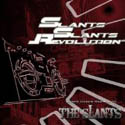 The
Slants The
SlantsSlants! Slants! Revolution! (self-released) Eight remixes from the stellar first Slants album. There's another full-length due soon, but this puppy is out there just to wet the whistle a bit. These mixes are much more dance-oriented than most of the material on Slanted Eyes, Slanted Hearts, but that's to be expected with such a project. The songs themselves survive the translations exceptionally well--largely because of the outstanding hooks of the originals. A joy ride, pure and simple. And while I expect the new album to blow this away, I'm happy to get this small fix. A fine reminder of just how good these guys really are. Surf the pleasure, dudes!
Contact:
 Philip Stevenson Philip StevensonStarless (Night World) By and large a true solo effort, this latest album from Philip Stevenson sounds a lot like the work of a collective. Maybe it's just multiple personality disorder, but I have a feeling that Stevenson just happens to be a stellar songwriter. More importantly, though, he knows how to put his songs down in the studio (as such, anyway). These pieces ramble through rock, the blues, a bit of americana and a whole lot of attitude. Somewhere between the Magnetic Fields and Leonard Cohen, I suppose. I'd include the quality of the lyrics in that judgment. Stevenson don't quip much, but he's got fine powers of observation. The characters in these songs ought to be recognizable to just about anyone, and they lay down some serious insight. Explaining this album to those who haven't heard it would be impossible. Stevenson refuses to pigeonhole himself. He simply writes what he sees and then works his ass off to give the song as much life as is possible. Quite the experience.
Contact:
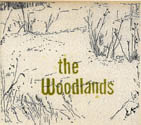 The Woodlands
The WoodlandsThe Woodlands (self-released) A duo from Portland, the Woodlands sounds a lot like, well, a duo. Strummed acoustic guitars and breathy female vocals predominate. Stop if you've heard this one before. Except that you probably haven't heard the Woodlands, or you'd realize that I was being more than a little flip. Yes, these songs do have the external sheen of hippy dippy wonderfulness, but they travel some seriously dark roads. There's so much rumbling beneath the surface it's sometimes hard to figure out how Hannah and Samuel Robertson (um, yes, they're married and all) manage to keep the songs so seemingly simple. The sound is unadorned but not skimpy. The guitars and piano have rounded tones and are given plenty of space to ring out. Hannah's voice is extraordinarily high-pitched (might even be a falsetto), but the recording lends it additional strength as well. This album was recorded in their bedroom. That's some bedroom. It's easy to get lost in the Woodlands, and that wouldn't be a bad thing at all. Just let the music blow through your soul and then see what you've got after the breeze has slowed.
Contact:
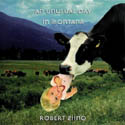 Robert Ziino
Robert ZiinoAn Unusual Day in Montana (Experimental Artists) I love Robert Ziino's stuff. It's very keyboardy and noodly and throbbing and generally warped. Just stellar, really. Then there are the song titles. "Cows Will Never Be On Colombo." "Kill It With the Bible." "Meat Is a Fetish." These are instrumentals, but the titles make plenty of sense when you listen to the songs. Or not, I suppose. It all depends on your state of mind. Ziino's songs have always made me smile (goofy title or no), and that's mostly because they're fun. Sure, they often ride the edge of what might be considered "music" by those who wish to restrict the use of the term. But the pieces contain so much unfettered joy within the electronic experimenting that I simply cannot imagine anyone not digging the stuff. My five-year-old loves it. And he also loves the Flaming Lips. So he's got good taste. Ziino is a few light-years beyond the scope of the average Flaming Lips album, but like the Lips, he never stints on the joy quotient. Effervescently bounding around the edge of the universe.
Contact:
Also recommended:
Ampline/Atomic Garden split 7" (Phratry)
Arms Exploding/Caterpillar Tracks split 7" (Phratry)
PJ Bond You Didn't Know I Was Alphabetical (Black Numbers)
Communipaw Communipaw (self-released)
Dios We Are Dios (Buddyhead)
Essex Chanel Love Is Proximity (self-released)
The Houston Brothers The Archer EP (Chocolate Lab)
Jamie Hutchings His Imaginary Choir (Nonzero)
The Izzys Keep Your Powder Dry EP (Fat Man)
Kasumi Trio Oh! Gimme You (Beta-Iactam Ring)
Knife the Symphony Dead Tongues EP (Phratry)
Elaine Lachica I Think I Can See the Ocean (Stunning Models on
Display)
Motion Turns It On Kaledoscopic Equinox (Chocolate Lab)
Outernational Eyes on Fire EP (self-released)
Panda Transport Monorail EP (Kinderlust)
Parenthetical Girls The Scottish Play (Tomlab)
Post Harbor. They Can't Hurt You if You Don't Believe in Them
(Burning Building)
The Read Party Lines 7" (Phratry)
The Reveling 3D Radio EP (self-released)
Seaspin Reverser EP (self-released)
Samuel Stewart The Beginner EP (self-released)
Uniform Motion Life (No Source)
Jonathan Vassar and the Speckled Bird The Fire Next Time EP
(Triple Stamp)
Yukon Blonde Yukon Blonde (Nevado)
| |
return to A&A home page